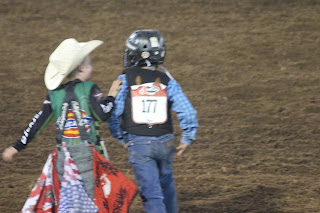 |
| (c) 2017 MJ Miller |
Florence's reputation too often precedes her. A prison town in the flatlands, from the highway she boasts backyards of single-wides to the west and the massive correctional complex to the east. Like many, I've ignored her, seen her as a place to pass by en route to my destination, yet her name is one of the most recognizable of the state's small towns.
"He was sent to Florence." Sentenced - to Florence! Inextricably intertwined with connotations of punishment, execution, and escape, Florence is home to the state's oldest operating penitentiary. Built in 1908 when Arizona was still striving for statehood, it replaced the infamous Yuma Territorial Prison. Prisoners did much of the construction on the new facility, and work programs continue as a valuable part of the correctional philosophy. Now, in addition to various trades and agricultural pursuits, inmate work with the BLM wild horses and burros, taming and training them for their future adoptive homes.
The history of the prison itself is material for volumes, but step away from Florence's shady side for a bit and you'll uncover one of the best preserved, historically significant towns in the state. Charming, tidy, and jam-packed with historic buildings, Florence is an unexpected delight. Unspoiled by flocks of tourists, it is a perfect site for rambling about, unbothered and unhurried, basking in sun and history.
 |
| The Old Florence Hotel / Silver King Hotel (c) 2017 MJ Miller |
We visited yesterday, on a Sunday, and were quickly and happily transported back to a slower-paced time. Stores and restaurants were closed, few cars were on the streets, and we had the town to ourselves. When drivers did appear, I was taken aback by their politeness. Two cameras in hand, I invariably had one focused on a structure at any given time. To my surprise, every passing car stopped so as not to ruin the picture by getting between me and the subject, and when I waved with appreciation, I could count on a return wave and a smile. A young woman on a bicycle apologized for
riding into my picture. Who is possibly that polite in this day and age, people? I was quickly smitten with the town. Sidewalk planters held "usable" plants, such as basil or sweet potato; hunter green park benches - all empty during our visit - were readily available for the tired visitor. Public restrooms weren't just convenient, but so appealingly appointed with talavera tile and hunter-green wood my husband actually called me over to look.
After my love-at-first-sight reaction, we got to work looking for historical sites. In all honesty, it would have been harder work avoiding them. It seemed nearly every building bore a historical placard. The buildings were largely intact and un-ruined by well-intentioned renovations, and the markers conveniently indicated what major changes had been made. A historian's and photographer's paradise, I suspect Florence will dominate this blog for weeks to come. In this post, you'll get but a sampling of Main Street photographs. I'll offer more in-depth histories in future entries.
 |
| The First Pinal County Courthouse / Pinal County Hospital. The one-story section dates to 1877, with the two-store portion dating from 1883. Now a visitor's center. (c) 2017 MJ Miller |
Main Street, Florence may well be Arizona's Mayberry. Vintage toys tempt from the windows of the TrueValue Hardware store, formerly the White-McCarthy Lumber & Hardware Co., at 290 N. Main. I can well imagine Ralphie pressing his nose against the windows, dreaming of a Red Ryder BB gun. The metal sidewalk canopy was added in 1941.
 |
| The White-McCarthy Lumber and Hardware Co. Building, 1914. (c) 2017 MJ MIller |
 |
| Vintage-style doll, TrueValue Hardware store window. (c) 2017 MJ Miller |
 |
| (c) 2017 MJ Miller |
 |
| The Mauk Building, 1925. (c) 2017 MJ Miller |
Hand-painted advertisements, murals, and traces of past businesses abound.
 |
| (c) 2017 MJ Miller |
 |
| (c) 2017 MJ Miller |
From the red, white, and blue festooning the first Pinal County Courthouse to signs in shop windows, patriotism is evident - and I'm always happy to see it.
 |
| (c) 2017 MJ Miller |
The well-preserved buildings of Florence represent a plethora of different architectural styles. The William Clark House is an example of the "late transitional" style, featuring a Victorian bay window and a pre-fabricated entryway.
 |
| The William Clark House, 1884. (c) 2017 MJ Miller |
More photos ahead in coming posts!














































